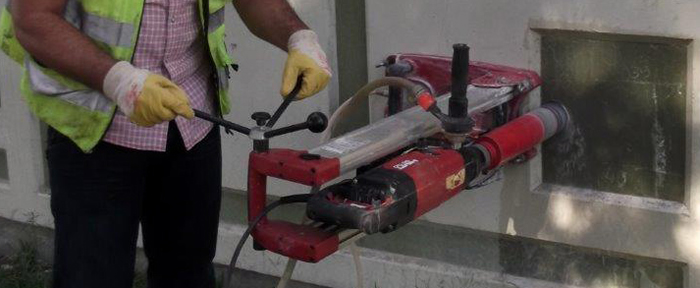Concrete and Cement Laboratory - Physical Testing
|
||
|
||
|
The Concrete and Cement Laboratory - Physical Testing n (UBC - AEF) is included in the Concrete, Stone and Ceramics Unit of the Materials Department of LNEC. |
||
|
This laboratory was set up in 1995 aimed to endorse building construction sector, as well as to support the LNEC strategy for planned research, experimental development and innovation in its domains of expertise. Additional information can be found at this laboratory's flyer. Field of expertiseThe activity developed by UBC - AEF involves characterization and assessment of concrete/mortar/pastes and its constituents, in the laboratory or on the construction site. This activity consists, apart from laboratorial characterization, in carrying out in situ works such as cores extraction, non-destructive testing, inspection of reinforced concrete structures and other actions that fundament the issue of expert reports, creation of guidelines and monitoring quality control. TestingUBC - AEF carries out more than 100 laboratorial tests, of which 31 are accredited by the Portuguese Institute for Accreditation (IPAC), and holds Certificate No. L0127. The tests performed include the following: Concrete/mortar
Aggregate
Cement
Cement and Fly ash
Fly ash
Other servicesIn addition to experimental evaluation, in support to the industry, owners, importers, etc., UBC - AEF develops activity in several other areas, for instance:
|






